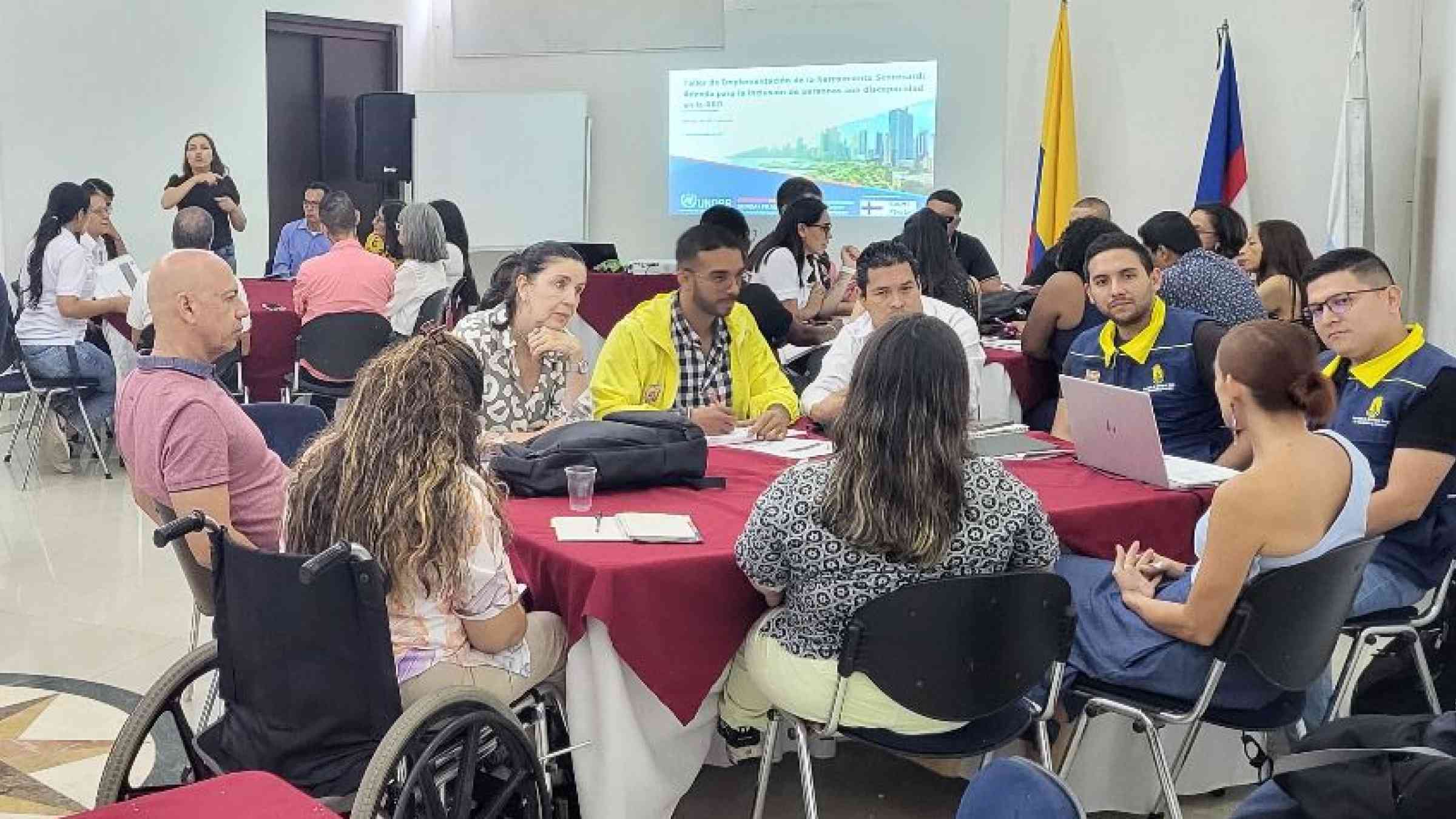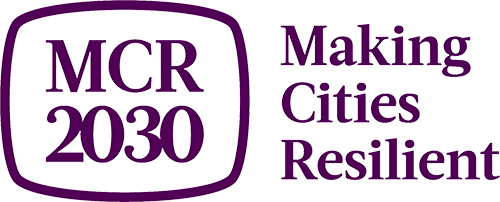Inclusive risk reduction an investment not a cost

Representatives from 139 countries and territories have been trained on how to implement disaster resilience strategies that are more inclusive of the perspectives and capacities of persons with disabilities.
More than 1,150 participants – including 84 persons with disabilities – were introduced to the Inclusion of Persons with Disabilities Annex to the Disaster Resilience Scorecard, which provides a means for cities and local governments to better protect some of their most at-risk communities.
The Global Training on Enhancing Inclusive Local Disaster Risk Reduction Strategies fielded an impressive line-up of international, national, and local level speakers who were united in one overall message: a more inclusive approach to disaster risk reduction is an investment and not a cost for resource-constrained municipalities.
'We must transform our words into action and we must do so immediately'
The online training took place in the lead-up to the 2023 International Day for Disaster Risk Reduction on 13 October, which has the theme ‘Fighting inequality for a resilient future’.
The Special Representative of the United Nations Secretary General for Disaster Risk Reduction and Head of the UN Office for Disaster Risk Reduction (UNDRR), Ms Mami Mizutori highlighted the opportunity to hand of more inclusive approaches to disaster resilience. ‘Through this training, we will learn about the experiences of persons with disabilities and of local government leaders. And most importantly, we will gain the ‘how-to’ of removing existing barriers to address the needs of persons with disabilities,’ Ms Mizutori said.
‘Together, let’s celebrate the International Day for Disaster Risk Reduction by reducing the inequalities that persist in disaster risk reduction practices. We must transform our words into action, and we must do so immediately.’ The overall architect of the Inclusion of Persons with Disabilities Scorecard,
Mr Carlos Kaiser Mansilla, the Director of NGO Inclusiva, in Chile, said: ‘Persons with disabilities are often disproportionally affected by disasters and have different and uneven levels of resilience and capacity to recover. ‘Persons with disabilities and organizations of persons with disabilities are best placed to know what is needed to be fully included and the best courses of action to achieve it. Nothing about us without us’
Participants heard from two cities that had successfully used the Disability Inclusion Scorecard. Ms Antonette A. Anaban, Director IV of the Department of Human Settlements and Urban Development, the Philippines, recounted how using the Scorecard had identified gaps and strengthened the inclusive nature of disaster planning in Baguio City.
‘Having the results of the Scorecard to hand was a good way to make the case for greater inclusion to the city’s leadership,’ she said. Baguio City has established an office in charge of persons with disabilities and has been collecting data on their situations. Such data was crucial in the Scorecard assessment as it helped the city to understand specific barriers persons with disabilities are facing. As a result, making risk information and communication materials accessible is one of Baguio City’s main goals moving forward.
Mr Johan Vasquéz, of the Emergency and Disaster Risk Management Secretariat of Santiago de Cali, Colombia, described how using the Scorecard has led to his city adopting two key measures to better protect persons with disabilities. First, Cali has committed to updating its early warning system so that alerts are disseminated in accessible formats. Second, the city will also develop a disaster preparedness guide for persons with disabilities and their caregivers that will be tested in drills.
Mr Vasquez shared a series of recommendations, including: the importance of local planning having a strong vulnerability lens; ensuring representation of persons with disabilities on decision making forums; and the need to continue advocating on inclusion throughout the planning process.
Ms Elham Youssefian, Senior Adviser of DRR and Climate Action at International Disability Alliance, emphasized three golden rules for working with persons with disabilities and enhancing inclusion. ‘Firstly, whenever you are considering which policy or activity is right, think of the ultimate goal in creating genuine equality without disabilities. Secondly, do not make assumptions because people with disabilities are not homogenous groups. They are different not only because of the type of impairments but also because of their different layers of identity. Lastly, disability inclusion should not be an after-thought, but should be planned in advance,’ she said.
'With strengthened cooperation we can take this important work forward'
Ms Titta Maja-Luoto, Director General for the Development Policy, Ministry for Foreign Affairs of Finland, which funded the development and piloting of the Disability Inclusion Scorecard, said: ‘There is clearly an urgent need to accelerate action to reduce disaster and climate related risks and their disproportionate impact on persons with disabilities.
‘One way of achieving this goal would be advancing disability inclusion in all relevant training of all stakeholders working on disaster risk reduction. With strengthened cooperation between all stakeholders, including organizations of persons with disabilities, we can take this important work forward, and ensure that no-one is left behind.’
A second Global Disability and Disasters Survey has been released as part of the 2023 International Day for Disaster Risk Reduction. It reveals several striking findings:
- 84% of persons with disabilities reported not being prepared in case of a disaster (12% higher than the first survey 10 years ago)
- 86% of persons with disabilities felt excluded from participating in disaster risk decision-making at the community level.
- Only 11% and 14% of persons with disabilities reported being aware of their national and local level disaster risk reduction plans respectively.
The Political Declaration of the Midterm Review of the Sendai Framework for Disaster Risk Reduction recommends greater efforts to scale up inclusive, accessible, all-of-society approach to protect lives, livelihoods, and wellbeing as being the most effective pathway towards resilient and sustainable cities.
The Training on Enhancing Inclusive Local Disaster Risk Reduction Strategies was one of the most inclusive certificate programmes yet organized by UNDRR’s Global Education and Training Institute. Supported by the Government of Finland as well as the Government of the Republic of Korea and the Metropolitan City of Incheon, the session was delivered with simultaneous interpretation in seven languages, International Sign Language and live captioning in English to ensure no participant was left behind.
UNDRR leads the Making Cities Resilient 2030 (MCR2030) global partnership on urban disaster resilience. The collaboration has mobilized 30 national governments, 10 national municipality associations, and more than 1,600 local governments (with a combined population of 494 million), committed to strengthening local disaster and climate resilience. MCR2030 has mobilized a ‘who’s who’ of partners with unmatched expertise and experience in supporting urban resilience.
The Annex for the Inclusion of Persons with Disabilities is available online.

